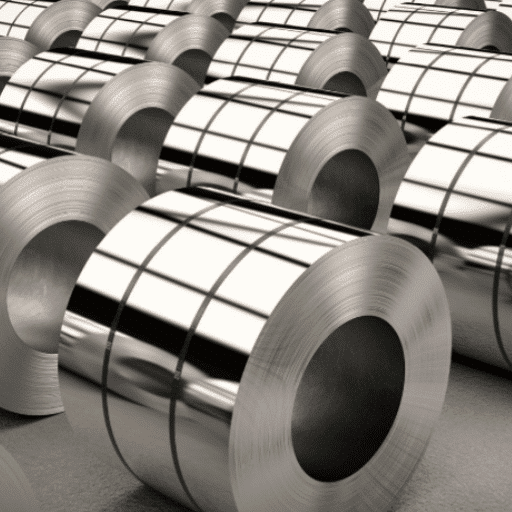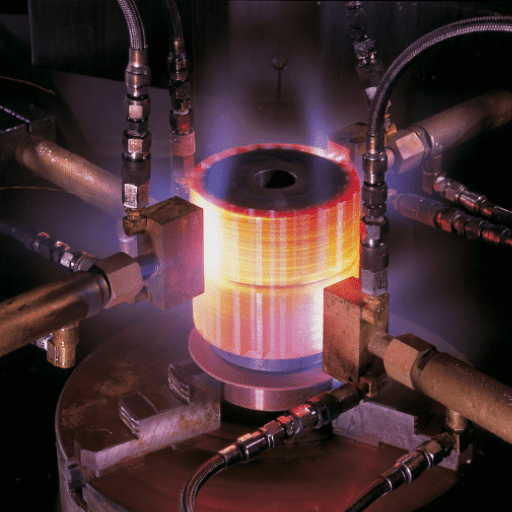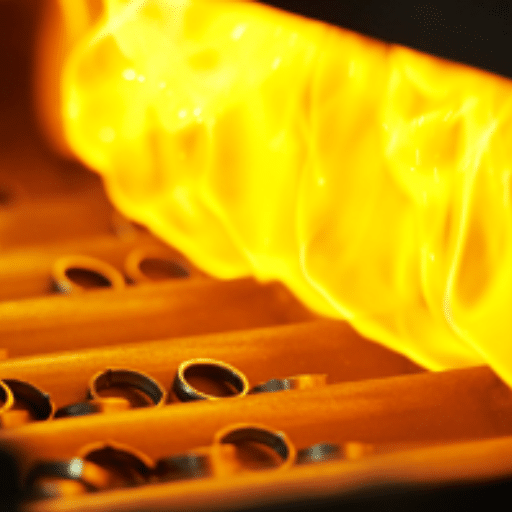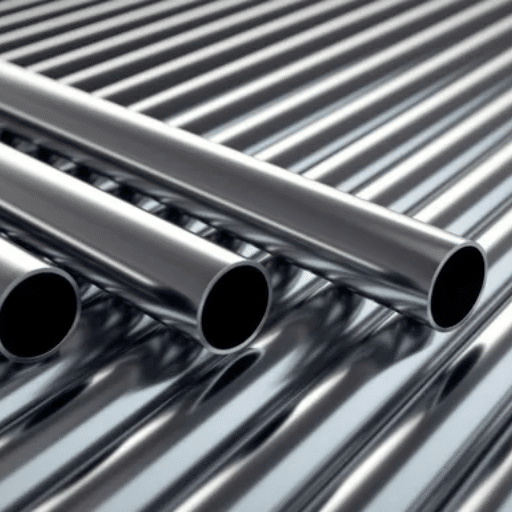Stainless steel seamless tubing is a huge factor in different sectors because of its amazing qualities, such as strength, durability, and adaptability. The tubing does not matter where it is being used, such as in the aerospace, medical, construction, or energy sector, and still, it gives the best results in the most demanding conditions. Now, the question arises: what really makes stainless steel seamless tubing special, and what makes it the go-to solution for critical projects? This guide takes a close look at seamless stainless steel tubing, inspecting its distinctive manufacturing process, major benefits, and the industries that are dependent on its superior quality. At the end of this piece, the reader will be very knowledgeable about the reasons why stainless steel seamless tubing is a reliable option for both common and specialized applications.
Overview of Seamless Stainless Steel Tubing

The manufacturing process of seamless stainless steel tubing involves the removal of the weld and the application of heat, which results in a product that is stronger and able to withstand high pressure when compared to its welded counterpart. The non-existence of seams means that there is little, if any, chance of a failure, therefore creating a non-stress environment which is perfect for most applications. This kind of tubing not only has great resistance to corrosion but also has a long life and very good accuracy, thus making it a favorite in the aerospace, oil and gas, power generation, and medical fields. Its trustworthiness and capacity to endure from very high to very low temperatures are the characteristics that make it a top-quality product for use under difficult conditions.
Definition and Composition
Seamless tubing is a kind of pipe or tube produced through a method that guarantees no welded joints or seams that would otherwise divide and disrupt the flow or continuity. The entire manufacturing process can be either metal extrusion, which results in a hollow tube, or making a tube case and pulling it through a die. The combination of a uniform material and no seams makes the tubing so strong and reliable that it can be used in high-pressure or even extreme conditions.
Key Details and Composition
Material Composition: Seamless tubing is commonly made from top-grade materials like stainless steel, carbon steel, or alloy steel. These materials greatly improve its resistance to rust, heat, and general wear and tear.
Size Precision: Seamless tubing coming out of the production process is characterized by being very close to the specified size and having a very smooth interior and exterior, which are properties making them fit for precision applications.
Mechanical Properties: The seamless construction of this tubing gives it very high tensile strength and load-bearing capacity, which are essential for industrial use.
Corrosion Resistance: The material, along with the uniform composition, gives this tubing superb strength against corrosion, which is the main reason for its usage in harsh environments.
Applications: Seamless tubing is used widely in many critical industries like aerospace, automobile, oil and gas, power generation, and medical equipment where it is manufacturing.
Types of Stainless Steel Tubing
Different stainless steel tubing types are available in a wide array to be specifically made for different industrial needs. Below are the primary types:
Seamless Stainless Steel Tubing
Seamless tubing is produced by a process that does not involve welding, which makes it suitable for high-pressure applications and good structural integrity of structure. Its uniform composition gives it the quality of being exceptionally strong and durable. The latest market data shows the use of seamless stainless steel tubing in different industries like oil and gas, aerospace, and power generation to a large extent. Its capacity to endure harsh environments without breakdown is the reason why it is widely chosen.
Welded Stainless Steel Tubing
The welded tubing comes from forming and fusing the stainless steel sheets. Technology related to welding has been improved and nowadays it has become almost equal to the quality of seamless tubing, which has turned welded options into versatile and cost-effective. These tubes have the most common use in situations where the demand is less critical, like in architectural structures, automotive exhaust systems, and decoration. This is due to their cheaper prices and the fact that they come in larger sizes.
Round Stainless Steel Tubing
Round tubing is the most common type, and it is also preferred for its easy installation and versatility. Construction, railings, and fluid transport are some of the industries where it is applied. The smooth surface and the strong structure ensure the durability of the product.
Square and Rectangular Stainless Steel Tubing
This type of tubing is usually selected for its sharp edges and modern look in applications such as building frames and furniture. Their structural strength may be a bit lower than that of round tubing but still, the design benefits in terms of both aesthetics and functionality make them the go-to option for architectural applications.
Polished Stainless Steel Tubing
Polished tubes go through further finishing stages to get a surface that is smooth and reflective. These have a wide area of application, which includes food and beverage, pharmaceuticals, and medical equipment, where cleanliness is paramount. The polished surface does not allow microbes to grow and is very easy to clean.
High-Precision Stainless Steel Tubing
The high-precision tubes are made for specialized applications and are manufactured with really strict tolerances. Their use is in aerospace, making devices, and instrumentation, where precise measurements and high quality are the two most important criteria.
The different types of stainless steel tubing do bring along with them certain specific advantages and they are catered to particular needs, making sure that the user gets the best use and longest life of the product.
Key Properties and Specifications
Corrosion Resistance
Stainless steel tubes are among the best materials available, as they have excellent properties that resist corrosion. Therefore, they are used in areas with extreme conditions, such as chemical industries and marine applications.
Strength and Durability
Very strong and durable are the qualities that are always associated with stainless steel tubing. Therefore, its operability is guaranteed for a long time since it can resist high pressures and mechanical stress.
Temperature Resistance
Stainless steel tubing has an excellent ability to perform in extreme temperatures so it can be used for both high-heat and cryogenic applications.
Hygienic and Easy to Maintain
Stainless steel’s non-porous surface makes cleaning very easy and it becomes very sanitary. This property justifies its use in food, pharmaceutical, and medical industries, where cleanliness is of utmost importance.
Aesthetic Appeal
With stainless steel tubing, you get a product that has an amazingly modern and sleek look. It is this characteristic that makes it a favored option in architectural and decorative projects.
Benefits of Using Seamless Tubing

Superior Strength and Durability
The process of making seamless tubing is such that it does not undergo any welding or jointing, thus giving it better structural integrity and resistance to pressure, and still being able to withstand more than welded tubing. Hence, it finds application in the oil and gas, chemical processing, and power generation industries that deal with high-pressure applications.
Enhanced Corrosion Resistance
Seamless tubing, particularly when made from stainless steel, is the best when it comes to the fight against rust and other factors leading to the metal’s decay. A cable of this kind will certainly be able to withstand even the most hostile of conditions, such as those found in the marine and chemical environments or even high-humidity ones, where durability is the main concern.
Improved Flow Characteristics
Likewise, seamless tubing’s surface is also its interior, which is the smoothest that can be, and so there are no stopping points or even rough surfaces that would interfere with the flow of fluid or gas, ensuring that the flow is always efficient. This is a critical advantage in precision and consistency areas, for instance, in hydraulic systems and heat exchangers.
Dimensional Accuracy
One of the main advantages of seamless tubing is its dimensional accuracy, which is specifically done to have a homogeneous wall and diameter. Such accuracy makes it a go-to material for enterprises like aerospace and automotive, where dimensions and performance consistency are the critical determinants.
High-Temperature and High-Pressure Capabilities
What is more, carrying seamless tubing no matter how high the temperatures and pressures are, the integrity of the tubing is not affected. This capability gives tubing a very wide range of uses like steam boilers, automotive parts, and the most extreme process in the industry, besides safety and performance under the most demanding conditions being ensured.
Corrosion Resistance
Seamless tubing is certainly famous for its superb capacity to withstand corrosion; hence, it is the material of choice for extreme environments. Here are five corrosion resistance features and benefits that are the most important:
Resistance to Chemical Exposure
Seamless tubing can expose the corrosive chemicals, such as acids, alkalis, and salts, without damage, thus being a very good choice for the chemical processing and pharmaceutical industries.
Rust Prevention
The tubing’s ability to withstand rusting helps its life in places with high moisture or humidity, as, for instance, in the case of marine applications and outdoor structures.
Longevity in Harsh Conditions
Seamless tubing is to live through the toughest environments and thus it performs excellently in both high-salinity and industrial pollution settings greatly prolonging its lifespan.
Protective Surface Oxide Layer
Stainless steel seamless tubing, for example, gets its surface covered with a passive oxide layer which then serves as a self-healing protective barrier against corrosion.
Compatibility with Extreme Temperatures and Pressures
The corrosion resistance of seamless tubing is not affected even when the temperatures and pressure are extremely high, thus it can be relied upon in challenging surroundings like power plants and offshore rigs.
These qualities emphasize the strength of seamless tubing, thus, its worth in the applications where high standards of durability and corrosion resistance are needed.
Mechanical Strength
Seamless tubing is one of the exceptional mechanical strength materials, and these are its main properties that it can endure on the toughest quality applications. Five aspects are expressed below that point out its mechanical strength in detail:
High Tensile Strength
Seamless tubing has no equal when it comes to tensile strength, and thus, it is a material that can be stretched to a considerable length without altering its shape. To illustrate, stainless steel seamless tubing can reach tensile strengths of approximately 600 MPa and even more, depending on the grade.
Resistance to Mechanical Stress
It can take the forces of heavy loads or vibrations and still remain faithful in terms of performance, thus providing reliability in such industries as aerospace and construction.
Impact Toughness
The material shows great toughness, which means that in case of a sudden impact or shock, it will absorb the energy without breaking, even in the cold.
Hardness and Wear Resistance
Seamless tubing is mainly produced with a high level of hardness, which is one of the major factors to its resistance to wear, scratches, and abrasions.
Dimensional Stability Under Load
It stays exactly the same size even after application of pressure or weight for a long time, thus guaranteeing very little change in size even in very demanding conditions.
All these features are the reasons why seamless tubing is considered one of the best in terms of mechanical properties, and thus it is a versatile and reliable material across sectors dealing with high technology.
Customizability and Fabrication Options
Seamless tubing has many options for customizing and fabricating, an impressive range of which can be utilized depending on the specific requirements of the different industries. These options increase its versatility and adaptability for different applications. Five important options for customization and fabrication are listed below:
Material Selection
Seamless tubing can be created from multiple materials, such as stainless steel, carbon steel, and alloy steel, even in the case of titanium, a so-called exotic metal. It is possible for industries to select materials that best match their performance, economic, and environmental requirements.
Size Customization
Diameters and wall thicknesses can vary widely for tubes, which means that they can be made to precisely the dimensions needed for each application.
Surface Treatment
Polishing, galvanizing, and coating are some of the advanced surface finishing methods that can be used to improve the quality of the tubing by increasing its corrosion resistance, the quality of its appearance, or any other property that is needed.
Heat Treatment
Tubing can be subjected to special heat treatments like annealing or tempering to obtain desired mechanical properties and to ensure proper functioning during performance under different conditions.
Bending and Shaping
The use of skilled and experienced workers and modern machinery ensures that seamless tubing can be bent, flared, or shaped to meet the most intricate specifications without putting its structural integrity at risk, thus catering to the needs of the application.
Applications of Seamless Stainless Steel Tubing

Because of its tensile strength, resistance to corrosion, and ability to survive in extreme environments, seamless stainless steel tubing is commonly used in many industries. Here are the five main applications, which demonstrate the tubing’s versatility and dependability, in more detail:
Aerospace and Aviation
Aerospace and aviation industries greatly depend on seamless stainless steel tubing, which is applied in hydraulic systems, fuel lines, and instrumentation systems. The material’s strength, along with its resistance to high/low temperatures, guarantees safe and efficient operations.
Oil and Gas Industry
Corrosion-resistant seamless steel tubing is applied in the oil and gas industry in the most challenging locations, such as offshore rigs, refineries, and processing plants, where it is used to transport extremely corrosive fluids and gases. The combination of very high pressure and extreme conditions makes seamless tubing the preferred option for pipeline and heat exchangers applications.
Medical Equipment
In the medical technology industry, seamless stainless steel tubing is a must-have during the production of medical devices such as needles, catheters, and surgical instruments. The smoothness of the interior and exterior surfaces of the tubing is a significant factor in maintaining cleanliness and keeping the production of the devices accurate at the same time.
Automotive Industry
The automotive industry uses seamless tubing for parts like exhaust systems, fuel injection systems, and structural components. The tubing’s high strength and resistance to rust make vehicles more durable and enhance their performance.
Power Generation
Seamless stainless steel tubing is a material that power plants use in the production of boilers, condensers, and heat exchangers. Its excellent performance at high pressures and temperatures makes it a vital element of energy generation systems.
Aerospace Industry
Seamless tubing is of paramount importance to the aerospace industry owing to its remarkable strength, accuracy and ability to withstand harsh conditions. These characteristics are indispensable for the protection and performance of the systems where reliability is the main aspect. The use of seamless tubing in the aerospace sector covers:
Hydraulic Systems
Seamless tubing finds its application in hydraulic systems that operate the landing gear, brakes, and flight controls of the aircraft. This material can withstand high pressure, thus making the operation safe and even more consistent.
Fuel Lines
The non-heavy and resistant to corrosion seamless tubing is the perfect choice for fuel delivery systems, thereby providing unproblematic fuel transfer even in the case of high-temperature or high-pressure conditions.
Engine Components
Seamless tubing is used in turbojet engine parts where extreme heat and mechanical strain are so high that only the best materials can ensure both performance and safety.
Cooling Systems
Seamless tubing is the main material for circulating the coolants in the aerospace cooling systems, maintaining the necessary temperatures of the crucial parts and preventing them being overheating during flight.
Airframes
The tube made of seamless material has very low density while still being extremely strong, therefore it is the perfect material for the structural components of airplane airframes which help in the reduction of the total aircraft weight and the performance of the aircraft as a whole.
Instrumentation and High-Pressure Systems
The aerospace sector is not only the most demanding in terms of maintenance, but its instrumentation as well as high-pressure systems also require accuracy, toughness, and the power to endure the harshest conditions. The seamless tubing is the backbone of these systems, making sure they work efficiently and steadily. To begin, here are five principal uses of seamless tubing in the fields of instrumentation and high-pressure systems:
Hydraulic Systems
Seamless tubing made of synthetics is able to withstand high pressure and is totally safe in flight control systems.
Pneumatic Systems
Seamless tubing is the backbone of the systems that rely on it to keep the air compressed and thus, the aircraft components stable and functional.
Fuel Delivery Systems
Seamless tubing that is precise and leak-proof allows for the safe and exact transfer of fuel even under extreme conditions of temperature and pressure.
Engine Control Systems
Seamless tubing resistant to high temperatures delivers the liquids that are needed for the engine to be controlled and for its performance.
Pressure Sensors and Gauges
Seamless tubing communicated fluids or gases to sensors without contamination, thus making it possible to measure and monitor high-pressure conditions accurately.
These mentioned uses reflect a strong dependency on seamless tubing in the aerospace industr,y which is associated with safety, reliability, and optimal performance.
Oil and Gas Sector
The oil and gas sector is a global powerhouse divided into upstream, midstream, and downstream segments, driving economies and energy supply worldwide.
|
Key Point |
Description |
|---|---|
|
Upstream |
Exploration & production |
|
Midstream |
Transport & storage |
|
Downstream |
Refining & distribution |
|
Main Products |
Fuel oil, gasoline |
|
Global Impact |
Economic & energy driver |
|
Top Producers |
USA, Saudi Arabia, Russia |
|
Challenges |
Regulation, environment |
|
Future Trends |
Renewables, digitalization |
Manufacturing Process of Seamless Tubing
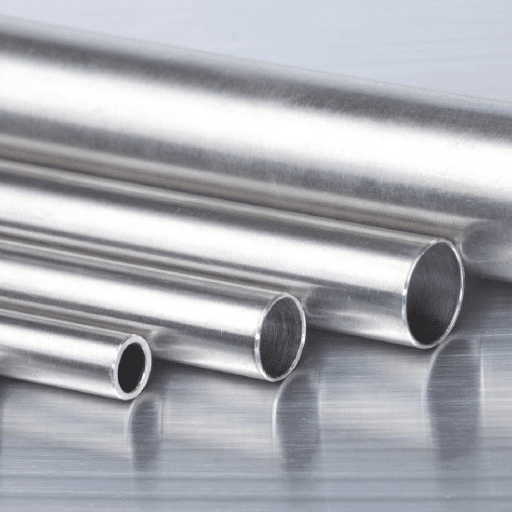
The manufacturing of seamless tubing consists of a number of complex processes, which guarantee the high-quality performance and the proper structural integrity of the final product. The main steps in the production process are given below:
Raw Material Selection
The top-notch quality steel is the raw material which is going to be selected. For producing seamless tubing steel billets or round bars are the most common choice made because of their strength and longevity.
Furnace Heating
The steel billets are put in a rotary hearth furnace where the specified temperature, which is normally around 1200°C (2192°F), is applied in order to make the material ready for the next processing step.
Creating the Pipe
With the help of a piercing mill, the heated billet is continuously pulled through a tapering machine where a rod makes a hollow part in the middle, thus giving the initial tubular form. This stage is fundamental in obtaining seamless construction.
Rolling and Sizing
After that the pierced billets go through rolling mills and sizing units to reach the required diameter and wall thickness. The advanced rolling methods applied guarantee both uniformity and accuracy.
Thermal Treatment
Treating the metal with heat for example, annealing or quenching and temperin,g increases its mechanical properties such as strength, toughness, and corrosion resistance.
Attention is given to every single process to ensure that the industry standards are strictly followed, thus the final product will be able to meet the performance requirements for the different applications.
Production Techniques
The manufacturing process employs several advanced techniques to produce top-quality products. Here is a complete listing of five major production methods:
Cold Rolling
Cold rolling is done at ambient temperature to get to the best thickness tolerances, the finest surface finish, and the most favorable mechanical properties. Generally, this method is adopted for those applications where exact dimensions and high-quality finish are needed.
Hot Rolling
In hot rolling, the temperature is raised above the material’s recrystallization point and then the rolling is done. This method decreases the material’s deformation resistance, making it easy to shape it, and is safe for producing large sections or structural components.
Extrusion
Extrusion is the process of pushing the material through the die to obtain a certain cross-sectional shape. This method is quick for intricate profiles and provides steady shape along the entire length of the product.
Casting
Casting is the method whereby molten material is poured into a mold where it takes on the shape of the mold and solidifies. It is a common technique for making parts with complex shapes and for use in the automotive and aerospace industries.
Forging
Forging is a technique in which the material is subjected to compressive forces that result in its deformation while simultaneously increasing its strength and resistance to fatigue. This method is often employed in the manufacture of high-durability products like gears, shafts, and tools.
The choice of any of these methods depends on the material’s characteristics, the specifications required, and the application for which it is intended, thus attaining the best performance and productivity.
Quality Control Measures
Quality control is one of the most important sides of the manufacturing process because it makes sure that all products are up to the required standards and specifications. Let’s take a look at five basically necessary quality control measures that are usually done in all industries:
Dimensional Inspection
It means measuring the dimensions of the components as per the specifications and confirming if the dimensions are correct. For instance, measuring with calipers and micrometers detects tolerances as small as ±0.01mm.
Material Testing
Testing the main materials for essential qualities like tensile strength, hardness, and chemical composition. This process guarantees that only materials of the highest quality are used for the production, which in turn will be less defective.
Non-Destructive Testing (NDT)
Different methods like ultrasound, X-ray, and magnetic-particle testing are used to find faults either on the surface or deep within the product without causing any damage to it. NDT use is mainly in the aerospace industry, which is a safety-critical field.
Process Monitoring
Continuous monitoring and controlling of the manufacturing processes with the help of sensors and machines. It minimizes variability and guarantees continuous product quality, and the data is often recorded for traceability.
Final Product Inspection
Doing thorough checks on the products that have been finished, and these checks may include visual inspection, functional testing, and packaging verification. Often, statistical sampling is applied to ensure efficiency while accuracy is still maintained.
The overall result of these measures is the improvement of product reliability, customer satisfaction, and operational efficiency across the board.
Material Types: 304 vs 316 vs Duplex
When it comes to the selection of stainless steel for various applications, it is very important to recognize the differences in types 304, 316, and Duplex. The comparison is detailed below and covers the materials’ traits, uses, and distinct advantages.
Stainless Steel 304
Composition: This alloy consists of 18% chromium and 8% nickel.
Corrosion Resistance: The material has good resistance to corrosion, particularly in mild environments, but it is less effective in marine or chemical environments.
Strength: The product has moderate mechanical strength, which makes it suitable for general-purpose applications.
Applications: The most common areas are kitchen equipment, sinks, food processing lines, and automotive trim.
Cost: This is the most economical option among the three, thus it is a widely used material.
Stainless Steel 316
Composition: The alloy contains 16% chromium, 10% nickel, and 2% molybdenum.
Corrosion Resistance: The material is superior to 304; the added molybdenum makes it more resistant to acidic and chloride-rich environments.
Strength: The product is comparable to 304 but performs better in harsh conditions.
Applications: The most common areas are marine environments, chemical processing equipment, and medical devices.
Cost: The material price is higher than that of 304 because of its enhanced properties.
Duplex Stainless Steel
Composition: The material has roughly equal parts of austenitic and ferritic stainless steel with a high chromium and low nickel content.
Corrosion Resistance: It has outstanding resistance, especially in chloride and stress-corrosion cracking environments.
Strength: Its strength is around double that of austenitic stainless steels (304 and 316).
Applications: The most common industries are oil & gas, desalination plants, and structural applications where high durability is required.
Cost: This type of steel is generally more expensive due to its specialized properties and manufacturing process.
Key Considerations:
304 is the best choice for general purposes in non-extreme environments.
316 is the most suitable for applications that are subjected to harsh chemical or saltwater exposure.
Duplex is the strongest and the most corrosion-resistant option.
The comparison made it clear that it is necessary to take cost, performance requirements, and operating conditions into account when choosing the right material.
Technical Considerations for Seamless Stainless Steel Tubing
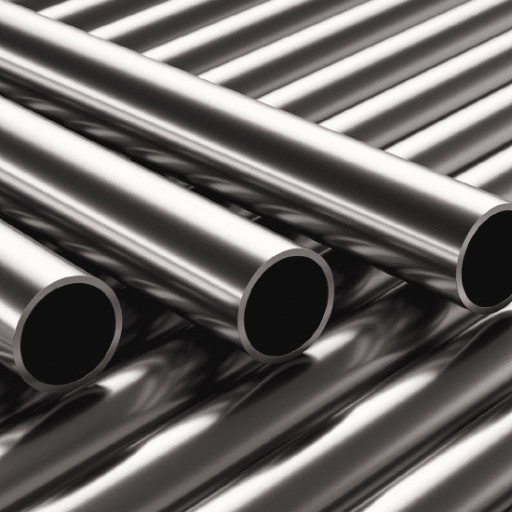
When choosing seamless stainless steel tubing, the operating environment and the particular application demands must be taken into account. Seamless tube has uniform strength, no weld seams, and very good resistance to pressure and mechanical stress—these are the main reasons for its selection. It is still very imperative to pick the right grade for the best performance.
Corrosion Resistance: if the environment is highly acidic or if there will be frequent exposure to chlorine or extremely high or low temperatures, then it is advisable to use stainless steel grades like 316 or Duplex, which possess excellent corrosion resistance and durability.
Mechanical Properties: Higher-leverage grades like super-austenitic or Duplex stainless steels are very helpful in situations that require strong and tough materials, such as the oil and gas industry.
Precision and Surface Finish: The medical, food processing, and instrumentation industries are the ones that usually require seamless tubing with accurate dimensions and smooth surfaces to avoid contamination and ensure reliability.
Cost vs. Longevity
Seamless tubing has a higher upfront price than welded ones, but its increased durability and reliability result in a lower total cost of ownership throughout the application’s life. The market and the data that support the trend show the growing use of seamless stainless steel tubing in critical industries because of its performance advantages and versatility in tough conditions.
Dimensions: Length, OD, and Thickness
Seamless stainless-steel tubing is produced in a very wide range of dimensions, which allows different applications to pick the most suitable ones for themselves. Usually the lengths for standard seamless tubing are between 6 feet (1.83 meters) and 24 feet (7.32 meters), but in addition to that, some lengths are available according to the project’s requirements. As for the outer diameter (OD), the smallest size is 1/8 inch (3.2 mm) and then goes up to more than 8 inches (203.2 mm) for the larger industrial sizes. The same goes for the wall thickness, which ranges from 0.01 inch (0.25 mm) for precision applications to over 0.5 inch (12.7 mm) for heavy-duty use.
These dimensions make seamless tubing able to supply to the needs of different industries, from aerospace and medical to oil and gas industries. For instance, thinner ODs with micro-wall thickness are perfect for medical devices and instrumentation since they provide a very lightweight solution which is also robust. Larger diameters and thicker walls are typical in industrial processes that need a considerable amount of pressure resistance, for example, chemical processing and power generation pipelines. These dimensioning options, along with the outstanding strength and corrosion resistance of stainless steel, guarantee that seamless tubing will continue to be in demand in modern engineering and design fields.
Welding and Fitting Options
Before deciding on welding and fitting techniques for seamless stainless steel tubing, it is very important to think about the application’s particular needs. Seamless tube is a good match for all welding methods, such as TIG (Tungsten Inert Gas), MIG (Metal Inert Gas), and high-end arc welding. TIG welding, in this case, attracts many users because of its ability to produce nice, high-quality welds with very little distortion, and hence it is preferred in the aerospace and pharmaceutical sectors.
Moreover, seamless tubing’s consistent wall thickness and no welded seam make it ideal for the application of standard fittings (compression, threaded, or push-to-connect) that result in stronger and more reliable connections. According to MarketsandMarkets, the market for stainless steel fittings is expected to increase at a CAGR of 4.3% by 2027, because of the growing demand for strong solutions in such industries as oil & gas and chemical processing.
The industry in places with extremely harsh or high-pressure conditions prefers to use seamless tubing combined with butt welding fittings, which makes the connection even more durable and leak-proof. The usage of these fittings also keeps the potential for crevices under control, thus reducing the risk of corrosion and increasing the overall performance. Furthermore, the use of advanced automated fitting systems is reported to be on the rise as they provide higher precision and efficiency for large-scale installations.
The characteristics that make seamless stainless steel tubing versatile and easy to weld also make it suitable for a wide range of modern applications and thus provide safety, security, and efficiency in operations even in the most demanding situations.
Delivery and Supply Chain Insights
In my opinion, a strong and effective supply chain is the key to satisfying the customer. We place a great deal of importance on timely deliveries for which we have built up partnerships with trustworthy suppliers and have made the most out of our logistics. Through precise demand prediction and the use of efficient distribution channels, we will be able to provide a steady supply of seamless stainless steel tubing even during peak demand periods.
References
- Seamless Steel Tubes and Pipes for Boilers
Link to Academia.edu
This document discusses various types of steel tubes, including stainless steel, and their applications. - Flow Masters: MAE 4344 Senior Design Final Report
Link to Open Research at Oklahoma State University
This report includes considerations for steel tubing in engineering design. - Failure Analysis of 316L Stainless Steel Tubing
Link to Academia.edu
This paper analyzes the corrosion failure of 316L stainless steel tubing, providing insights into material performance.
Frequently Asked Questions (FAQ)
What are the benefits of using stainless steel seamless tubing in industrial applications?
Stainless steel seamless tubing offers exceptional corrosion resistance, making it ideal for industrial environments where exposure to harsh chemicals and moisture is common. Its high strength-to-weight ratio and consistent wall thickness provide durability and reliability in critical applications. Additionally, seamless tubing minimizes the risk of leaks and failures, ensuring a safer and more efficient operation.
How does the wall thickness of seamless tubing affect its performance?
The wall thickness of seamless tubing is crucial as it directly impacts the pressure rating and overall strength of the tubing. A thicker wall provides better resistance to external forces and allows for higher pressure applications. Conversely, thinner walls can be suitable for lower-pressure needs and reduce material costs. Selecting the appropriate wall thickness is essential to meet the specific requirements of your application.
What grades of stainless steel are commonly used for seamless tubing?
Common grades of stainless steel used for seamless tubing include 304 and 321. Grade 304 stainless steel tubing is known for its excellent corrosion resistance and is suitable for a wide range of applications. Grade 321, which contains titanium, offers enhanced stability at high temperatures, making it ideal for aerospace and industrial applications. Selecting the right grade ensures optimal performance based on environmental conditions.
Can I get custom sizes of stainless steel seamless tubing?
Yes, many tubing suppliers offer custom sizes of stainless steel seamless tubing to meet specific project requirements. Customization can include variations in outside diameter, wall thickness, and length to suit particular applications. This flexibility allows industries to utilize tubing that fits perfectly within their systems, ensuring efficient and effective performance.
What is the difference between seamless and welded stainless steel tubing?
Seamless stainless steel tubing is manufactured without any welded seams, providing a uniform structure and higher strength. This construction method minimizes the risk of leaks and weaknesses found in welded tubing. In contrast, welded tubing is formed by joining two edges, which can lead to potential weak points. For high-pressure and critical applications, seamless tubing is often preferred for its reliability.
How do you ensure the quality of stainless steel seamless tubing?
Quality assurance for stainless steel seamless tubing involves strict adherence to industry standards such as ASTM A269 and ISO certifications. Manufacturers conduct rigorous testing, including dimensional checks and mechanical property assessments, to ensure the tubing meets high-quality requirements. Additionally, using high-grade stainless steel material and following precise fabrication processes contributes to the overall reliability of the product.
What applications typically use seamless instrumentation tubing?
Seamless instrumentation tubing is widely used in applications requiring high precision and reliability, such as oil and gas, chemical processing, and pharmaceutical industries. Its corrosion-resistant properties and ability to withstand high pressures make it suitable for critical instrumentation systems. This tubing is often used for transferring fluids, gases, and for pressure measurement, ensuring optimal performance in demanding environments.
What is the significance of corrosion resistance in stainless steel tubing?
Corrosion resistance is a key attribute of stainless steel tubing, particularly in environments exposed to moisture, chemicals, and high temperatures. This resistance prevents degradation and extends the lifespan of the tubing, reducing maintenance costs and downtime. Selecting corrosion-resistant materials such as 304 or 321 stainless steel ensures the tubing can withstand harsh conditions without compromising performance.

